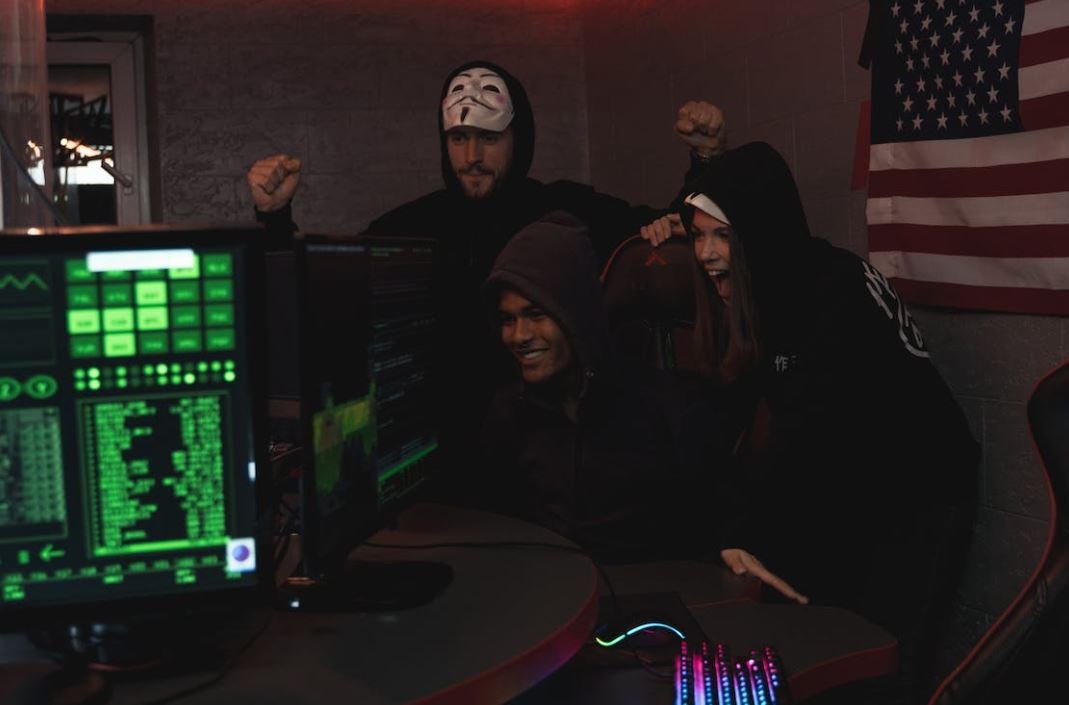Generative Music: ¿Qué es?
Generative music es un tipo de música que se crea utilizando algoritmos y sistemas computacionales para generar piezas musicales de manera automática.
Key Takeaways
- Generative music is created using algorithms and computer systems to automatically generate musical pieces.
- It allows for endless variations and unique compositions.
- Artificial intelligence is often used to create generative music.
- Generative music can evoke a sense of unpredictability and serendipity in the listening experience.
Este tipo de música permite la creación de composiciones únicas y variadas, gracias a la capacidad de los algoritmos de generar música de manera automática. **Utilizando sistemas computacionales y algoritmos complejos, se pueden crear piezas musicales inesperadas y emocionantes**.
La inteligencia artificial (IA) juega un papel importante en la creación de generative music. **La IA permite a los sistemas analizar patrones musicales y generar nuevas composiciones basadas en esa información**. Es capaz de adaptarse y aprender a medida que se le proporciona más datos y conocimientos musicales.
Tabla 1: Ventajas y desventajas de la generative music
| Ventajas | Desventajas |
|---|---|
| Endless variations | Potential lack of emotional depth |
| Unique compositions | Dependence on technology |
| Exploration of new musical territories | Difficult to replicate live performance |
Una de las características más interesantes de la generative music es su capacidad para evocar una experiencia auditiva inesperada y llena de sorpresas. **Cada reproducción de una pieza generative será única, ya que el algoritmo genera constantemente variaciones y cambios en la composición**. Esto crea un sentido de frescura y serendipia en la escucha.
La generative music no está limitada a un género o estilo musical en específico. **Puede explorar toda una gama de territorios musicales, desde lo tradicional hasta lo experimental, permitiendo el descubrimiento de nuevas formas y estructuras musicales**.
Tabla 2: Ejemplos de generative music en la historia
| Año | Compositor | Obra |
|---|---|---|
| 1956 | Iannis Xenakis | Metastasis |
| 1974 | Brian Eno | Discreet Music |
| 2018 | Holly Herndon | PROTO |
Generative music también se ha utilizado en aplicaciones interactivas, como instalaciones de arte sonoro y videojuegos. **Esto permite a los oyentes interactuar con la música y explorar las múltiples capas y posibilidades de una composición generativa**.
En conclusión, generative music es una forma emocionante y novedosa de crear y experimentar con música. **Utilizando algoritmos y sistemas computacionales, se puede generar música única y en constante evolución, explorando nuevos territorios y aportando un sentido de sorpresa en la escucha**. Ya sea en instalaciones artísticas, videojuegos o simplemente como una experiencia auditiva abstracta, la generative music ofrece un mundo de posibilidades para la creación musical.
Tabla 3: Tipos de algoritmos utilizados en generative music
| Tipo de algoritmo | Descripción |
|---|---|
| Algoritmos recursivos | Se basan en la repetición de patrones para generar música. |
| Algoritmos genéticos | Se inspiran en la evolución biológica para generar composiciones musicales. |
| Redes neuronales | Utilizan modelos matemáticos inspirados en el funcionamiento del cerebro humano. |

Common Misconceptions
Misconception 1: Generative music is completely random
Generative music is often mistaken for being purely random with no underlying structure or intention. However, this is not the case. While generative music is created through algorithms and computer programs, it still follows a set of rules and parameters that guide the composition process.
- Generative music relies on pre-determined rules and algorithms
- These rules ensure coherence and structure in the music generated
- Randomness can be incorporated as an element within the rules, but it is not the sole determinant
Misconception 2: Generative music is no different from ambient music
Although generative music and ambient music can sometimes have similarities, they are distinct genres with different approaches and intentions. Generative music focuses on the creation of music through algorithms and generative processes, while ambient music emphasizes creating a particular mood or atmosphere.
- Generative music is driven by algorithms and generative systems
- Ambient music aims to create a specific mood or atmosphere
- Both genres can coexist, but they have different artistic goals
Misconception 3: Generative music lacks human creativity
One common misconception around generative music is that it is devoid of human creativity since it is generated by algorithms. However, generative music is a collaboration between human creators and the algorithms or systems they design. The algorithms used are the product of human creativity and imagination, shaping the final outcome of the generative music.
- Human creativity is involved in designing the generative algorithms
- The algorithms are tools used by human creators to express their artistic vision
- Generative music would not exist without human intervention and creative input
Misconception 4: Generative music is always complex and inaccessible
Many people assume that generative music is always complex and difficult to understand or appreciate. While some generative music compositions can be intricate, there is a wide range of generative music that varies in complexity and accessibility. Generative music can be created with simple algorithms or systems that produce more accessible and enjoyable musical experiences.
- Generative music can be as simple or as complex as the creator intends
- There are generative music compositions that are designed to be easily accessible and enjoyable by a broad audience
- Complexity in generative music can be a deliberate artistic choice, but it is not inherent to the genre
Misconception 5: Generative music lacks emotion and human connection
Another misconception is that generative music is detached from emotions and lacks human connection. However, generative music can evoke emotions and create meaningful connections with listeners, just like any other form of music. The algorithms used in generative music can be designed to generate specific emotions or moods, allowing for deeply emotional and personal experiences.
- Generative music can evoke a wide range of emotions in listeners
- The algorithms used in generative music can be designed to simulate human emotional expression
- Listeners can form personal connections and find meaning in generative music compositions

Introduction
Generative music is a fascinating concept that involves the use of algorithms and systems to create music that evolves and develops over time. This article explores various aspects of generative music, including its definition, techniques, and notable examples. In the following tables, you will find intriguing data and information related to generative music that will surely captivate your interest.
Table: Pioneers of Generative Music
This table highlights some notable pioneers in the field of generative music, along with their groundbreaking contributions.
| Artist | Contribution |
|—————–|————————————————-|
| Brian Eno | Coined the term “generative music” |
| John Cage | Experimented with indeterminacy in music |
| Iannis Xenakis | Introduced mathematical models in composition |
| Laurie Spiegel | Developed algorithmic music software |
| Karlheinz Stockhausen | Used electronic technology in his compositions |
Table: Benefits of Generative Music
This table explores the various benefits associated with generative music, highlighting its positive impact on different aspects of life.
| Benefit | Description |
|——————————–|—————————————————————————|
| Enhances creativity | Inspires artists to explore new musical ideas and experiment |
| Reduces stress and anxiety | Provides calming and soothing music for relaxation |
| Augments focus and productivity| Creates ambient soundscapes that aid concentration and work efficiency |
| Enhances mindfulness | Facilitates meditation and fosters a sense of present-moment awareness |
| Offers unique listening experiences | Provides dynamic, evolving music that captivates the listener’s attention |
Table: Generative Music Techniques
This table outlines various techniques employed in generative music creation, showcasing the diversity and creativity of the field.
| Technique | Description |
|—————————-|———————————————————————————-|
| Markov Chains | Uses probabilistic transitions between musical states to generate new sequences |
| Fractal Music | Iteratively applies mathematical functions to create self-similar musical motifs |
| Cellular Automata | Emulates cellular structures to generate evolving patterns |
| Algorithmic Composition | Utilizes logical rules and algorithms to generate musical compositions |
| Chaos Theory | Applies chaotic systems and attractors to create unpredictable music landscapes |
Table: Notable Generative Music Installations
This table highlights some remarkable installations that showcase the potential of generative music in immersive experiences.
| Installation | Artist | Description |
|—————————–|————————-|——————————————————————————————-|
| “Dérive” | Ryoji Ikeda | Uses generative soundscapes to create an audiovisual journey in a large-scale installation |
| “The Murder of Crows” | Jane Pitt | Combines generative music and visual elements to represent a flock of digital crows |
| “Nunc Stans” | Brian Eno | Creates an ever-evolving generative ambient sound installation |
| “Bioluminescence” | Chris Levine | Illuminates trees with generative sound and light, harmonizing with each other |
| “In the Age of the Remotely Piloted Aircraft” | Robert Henke | Explores auditory/emotional effects of drone warfare through generative music |
Table: Generative Music Application Areas
This table explores diverse areas where generative music finds applications and empowers various industries.
| Application Area | Description |
|—————————|———————————————————————————-|
| Gaming Soundtracks | Enhances gaming experiences with adaptive and immersive generative soundscapes |
| Film Score Composition | Creates unique and atmospheric scores that dynamically adapt to narrative events |
| Therapy and Healing | Aids in meditation, relaxation, and therapy through soothing generative music |
| Sound Design | Generates innovative and unique sound effects for films, advertisements, etc. |
| Ambient Environments | Establishes dynamic, ever-changing soundscapes for public spaces and events |
Table: Notable Generative Music Software
This table showcases noteworthy software tools and platforms used to create generative music.
| Software | Description |
|———————–|——————————————————————————–|
| Max/MSP | A visual programming language and environment for generative music composition |
| SuperCollider | An audio synthesis engine and programming language used in algorithmic music |
| Koan | Combines algorithmic composition with artificial intelligence techniques |
| Obleo | Generates endlessly evolving soundscapes based on user-defined parameters |
| Nodal | A generative music app that allows users to construct music graphs visually |
Table: Impact on Music Education
This table explores the potential impact of generative music in music education, revolutionizing the way students learn and create.
| Impact | Description |
|——————————-|————————————————————————–|
| Fosters creativity | Encourages students to explore unique musical ideas and experiment |
| Deepens understanding | Provides opportunities to analyze, modify, and interact with music systems|
| Promotes collaboration | Facilitates group composition, where students contribute to a shared result|
| Enables exploration | Offers students the chance to discover algorithms and generative techniques|
| Develops technical skills | Introduces students to programming and software tools used in music-making |
Conclusion
Generative music represents a vibrant and innovative approach to music creation that has found applications in various fields. From its pioneers and techniques to its impact on different industries and education, the possibilities of generative music continue to expand. The tables provided in this article offer glimpses into its fascinating aspects, sparking curiosity and demonstrating the depth of this evolving art form. Through generative music, the boundaries of traditional compositions are pushed, fostering creativity, relaxation, and heightened experiences for both artists and listeners.
Frequently Asked Questions
What is Generative Music?
Generative music is a type of music that is created using algorithms or rules to generate the sounds and compositions. It is often characterized by its ability to continuously evolve and change over time, resulting in unique musical experiences.
How does Generative Music work?
Generative music works by using algorithms or rules that determine how the music is generated. These algorithms can take into account various factors such as randomness, user input, or the current state of the music to create new sounds and compositions. The music is usually created in real-time, allowing for endless variations and possibilities.
What are the benefits of Generative Music?
Generative music offers several benefits, including:
- Endless variations and unique compositions
- Ambient and immersive musical experiences
- Relaxation and stress reduction
- Enhanced creativity and inspiration
- Background music for various activities
How can I listen to Generative Music?
Generative music can be listened to through various mediums, including:
- Streaming platforms
- Mobile applications
- Web-based platforms
- Live performances
- Custom software or hardware
Can I create my own Generative Music?
Yes, it is possible to create your own generative music. There are various tools and software available that can help you get started, even if you don’t have a background in music composition or programming. Experimentation and creativity are key when creating generative music.
Is Generative Music only for electronic genres?
No, generative music is not limited to electronic genres. While it is commonly associated with electronic or ambient music, generative techniques can be applied to various genres and styles, including classical, jazz, and experimental music.
Are there any famous artists known for using Generative Music?
Yes, there are several famous artists who have used generative music techniques in their work. Some notable examples include Brian Eno, who is often credited as one of the pioneers of generative music, and artists like Autechre, Alva Noto, and Steve Reich, who have incorporated generative elements into their compositions.
Can Generative Music be used for therapeutic purposes?
Yes, generative music has been used for therapeutic purposes, such as relaxation, meditation, and stress reduction. The evolving and immersive nature of generative music can help create a calming and soothing atmosphere, making it suitable for various therapeutic practices.
Are there any copyright restrictions for Generative Music?
The copyright restrictions for generative music are similar to other forms of music. If you create your own generative music, you automatically hold the copyright to your compositions. However, if you use samples or copyright-protected material in your generative music, you may need to obtain permission or ensure that your usage falls within applicable copyright laws.
Are there any resources to learn more about Generative Music?
Yes, there are several resources available to learn more about generative music, including books, online tutorials, forums, and communities dedicated to generative music. Some recommended resources include “Generative Art” by Matt Pearson and websites like Generative.fm and generativemusic.com




